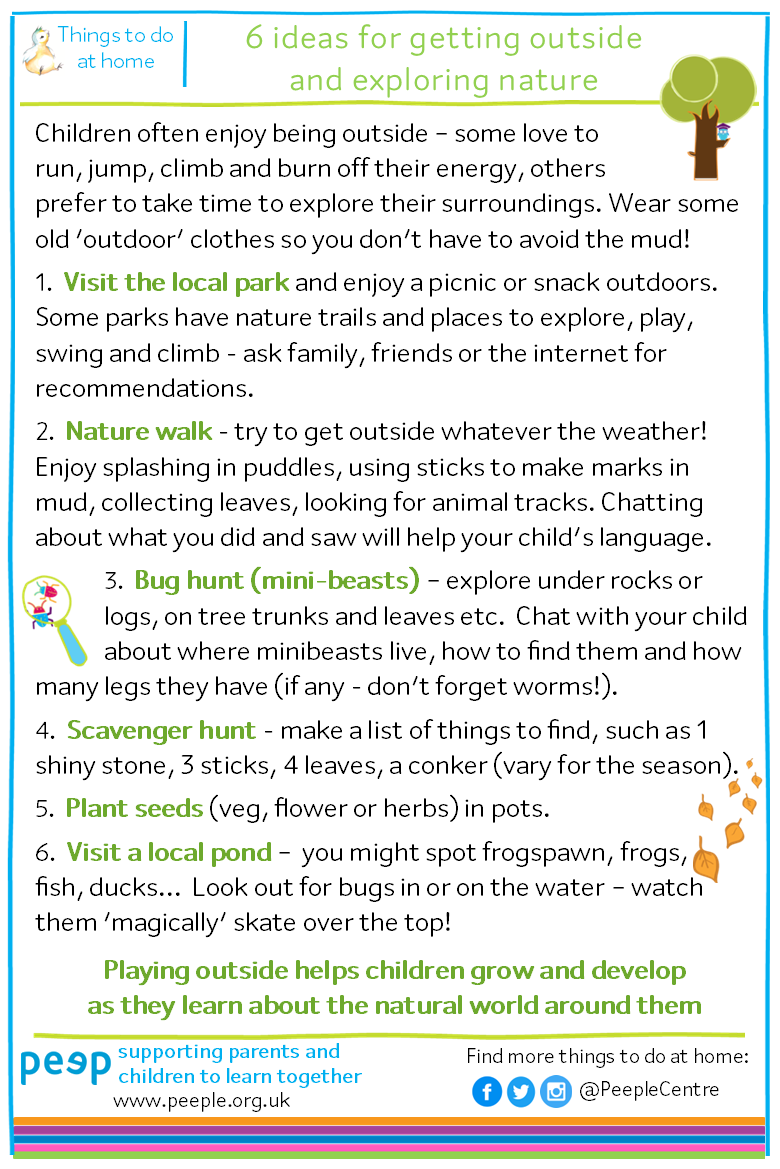Green
weblinks from LTP training
Here are links to the information covered during the Learning Together Programme. The links in purple are in the login Members Area, others are on public pages.
Practitioner Accreditation:
> Practitioner Accreditation
> Practitioner Accreditation overview (more detail)
Plus a separate ‘Practitioner Accreditation’ login area if/when you register for the accreditation.
Introducing Peeple and Peep:
> What we do
> Peep or Peeple
Programme Aims (parents and children) and Principles:
> Peep learning together programme (including link to 'Peep in Fife' video)
> Peeple principles
Research and evidence:
> Early years and parenting research
> The Home Learning Environment: how it helps
> Peep evidence base
ORIM (Opportunities, Recognition, Interaction & Modelling):
> ORIM
> ORIM in action & cued modelling
WHAT: Structure and content of the Peep Learning Together Programme
> Programme Content - overview of the 5 strands of learning, strand map, topic aims map and an example of materials for one topic
> Planning and topic maps - planning docs and maps incl. Developmental stage/ age map
> Strand key ideas & Glossary - downloadable from the top of each Strand page, e.g. Communication and Language Strand page
Supporting materials for LTP content:
> Practitioner documents: Session Plans and Topic Cards - Topic pages e.g. Talking Maths topic
> Parent handouts: link to the Topic Toolbox from each Topic page e.g. Talking Maths topic Toolbox plus all the Topic handouts and Things to do at home
> Online shop: Singing Together songbooks/ CD/ MP3s, Programme Folder, Peep the Parrot book (optional)
> Components of a Peep session - tips on delivering Talk time, Sharing songs, etc
Flexible delivery:
> Ways of using Peep - overview
> Delivery support - incl. tips on different delivery formats: Peep One-to-one ~ Peep groups ~ Peep in Stay and Plays or any drop-in sessions
> Types of targeted Peep delivery - practical tips (incl. for Peep online, outdoors, in early years settings, etc)
Review and evaluate:
> Session Review Form for practitioners - downloadable from Peep resources (to download) and each Topic page
> Feedback forms and evaluation with families
Feature box colour:
Side Quote Color:
types of targeted peep LTP - delivery tips
The links below and in the menu include practical delivery tips from Peep practitioners. Sometimes there are also adapted session plans. They cover various types of targeted Peep delivery, whether it's in a specific context or location (eg outdoors, in a school, online) or with families in a similar situation to each other (e.g. children about to transition into school/ nursery, or parents with low mood/ anxiety). Hopefully they'll give you some ideas - you're welcome to use them or choose your own Peep LTP topics.
early years or school settings:
> Peep Transition into pre-school, nursery or school
> Peep in nursery, pre-school or school settings
> Peep in primary school (age 4/5 – 7)
Other types of targeted delivery:
> Peep for parents with low mood, anxiety or isolation
> see also the Case studies pages, for more examples of how you can flexible use the Learning Together Programme.
Other delivery support info:
> Ways of using Peep - overview - Here you'll find a list of links to short case studies about different ways of using Peep (in the public/ non-login section of the website).
> Delivery support generally - e.g. tips on recruiting families, Peep one-to-one, in groups and in stay and plays, core elements of Peep sessions, etc.
> Peep resources to download (e.g. strand and topic aims maps; poster, leaflets and logo to use or adapt for recruiting families; feedback forms and certificate, etc.
> LTP topics and session plans etc - see the 'topic' link for each strand in main menu
- There are tips and updates in our regular Peep Postings Newsletter (for Peep practitioners/managers) and Peeple Newsletter (for practitioners and others) - check your email spam/ junk folder or contact us if you or Peep colleagues haven't been receiving them.
- Join our Peep Practitioner Facebook group - and do add your questions, suggestions and ideas!
- Contact us: support@peeple.org.uk - practitioners often tell us that you're keen to hear about other Peep practitioners' delivery experience, so do get in touch to share your examples!
other types of peep LTP delivery:
> including Transition into nursery or school ~
Outdoors ~ Online ~ Low mood
Feature box colour:
Side Quote Color:
- Read more about types of targeted peep LTP - delivery tips
- Log in or register to post comments
seasons and celebrations through the year
Seasons
These tips and TDAHs can be used with any topic to fit the season, including HPD: Exploring nature
Autumn:
> Autumn outdoor activities: PDF for printing or Image for screen
> Playing in the woods - PDF for printing or Image for screen
> Go on a colour hunt - orange for Autumn - PDF for printing or Image for screen
> peep tip - Exploring nature - Autumn - PDF for printing (2xA5) or Image for screen
Winter:
 Here are a few ideas for activities that work well in winter - whether for getting outdoors, for wintery sensory and imaginative play indoors, or for adding a bit of colour on a dark and gloomy wintery day!
Here are a few ideas for activities that work well in winter - whether for getting outdoors, for wintery sensory and imaginative play indoors, or for adding a bit of colour on a dark and gloomy wintery day!
> Winter outdoor activity challenge: PDF for printing or Image for screen
> Exploring nature - Winter - PDF for printing (2xA5) or Image for screen
> Ice pictures or mobiles: PDF for printing or Image for screen
> Sensory play with ice and toy animals: PDF for printing or Image for screen
> Playing with a light box: PDF for printing or Image for screen
> Making a sensory bottle (visi-bottle or swishy bottle): PDF for printing or Image for screen
Spring:
> peep tip - Exploring nature - Spring - PDF for printing (2xA5) or Image for screen
Summer:
> Peep Summer of Play ideas - Summer - PDF for printing or Image for screen
> things to do at home - Playing outside - 4 Summer play ideas - PDF for printing (2xA5) or Image for screen
Christmas Things to Do At Home ideas (TDAHs) and songs:
> Christmas story basket: PDF for printing (2 x A5) or Image for screen
> Playing with a Magic Sounds Box - Christmas: PDF for printing or Image for screen
> Winter & Christmas sensory play - 4 ideas: PDF for printing or Image for screen
> 'Christmas is....' [acknowledging mixed emotions - the highs and lows of Christmas]: Image for screen (square)
> Christmas pud playdough recipe & song: PDF for printing (2 x A5) or Image for screen
> Songsheet: We wish you a Merry Christmas (adapted): PDF for printing or Image for screen
> Songsheet: 5 mince pies and When Santa got stuck up the chimney: PDF for printing or Image for screen
Peep Parrots with Christmas hats (you can add these to your own posts or documents):
~ Parrots singing ~ Parrots chatting ~ Parrots reading ~ Parrots playing ~ Parrots pointing
festivals and celebrations:
These can be used with any topic
> Diwali: Celebrating cultural diversity - PDF for printing or Image for screen
> Halloween sensory play - PDF for printing or Image for screen
> Pumpkin and Halloween ideas - PDF for printing or Image for screen
HPD Early sensory experiences | HPD Making sense of the world | CL Things to do and talk about together
> Making pancakes (rhyme and recipe) - PDF for printing or Image for screen
> Making pancakes - songsheet: Pop a little pancake... - PDF for printing or Image for screen
HPD Making sense of the world | HPD Exploring food | HPD Making the most of food and mealtimes | CL Things to do and talk about together
Feature box colour:
Side Quote Color:
Parenting is... complicated!
Parenting can be tough! Which is why we don’t judge or tell people what they ‘should' do, we simply encourage & build on what families already do.
Contact your local children's centre, family centre or family hub if you'd like to see if there's a Peep group near you.
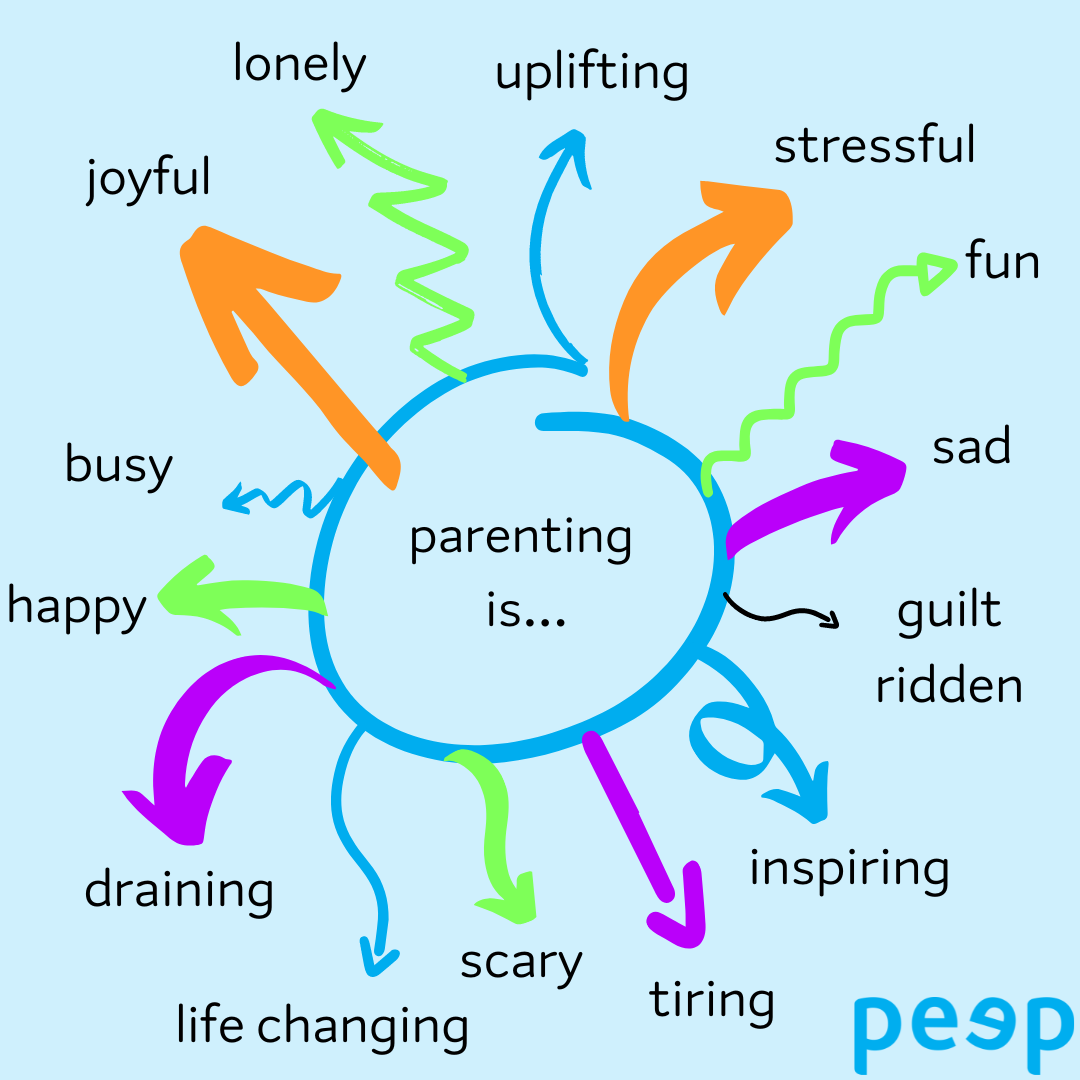
Feature box colour:
Side Quote Color:
Talking with your baby
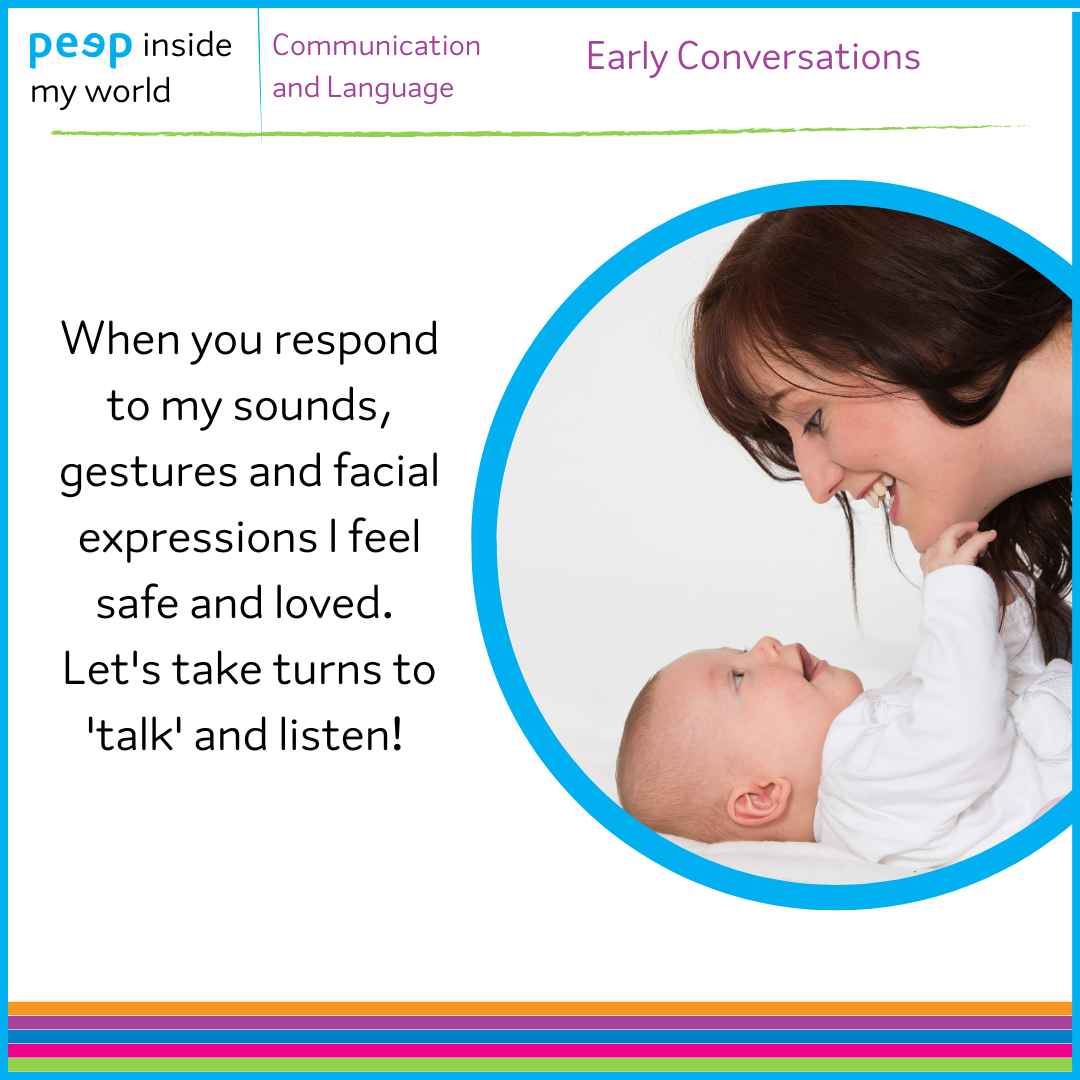 Babies 'talk' more and more when others respond to them - this is how they learn.
Babies 'talk' more and more when others respond to them - this is how they learn.
Try copying your baby’s cooing sounds or facial expressions. Watch and listen for their responses and leave gaps in the conversation so that your baby has time to answer you in their own way.
Feature box colour:
Side Quote Color:
Blog: Everyday play with free, everyday things
Have you ever found that your child is more interested in the box that a toy came in, than the toy itself? It’s a common theme! When we think of toys for children to play with, we often think of shop-bought toys that ‘do’ something, but young children have an inborn curiosity which means that exploring everyday objects is just as exciting to them.
Play develops important life skills like talking and listening, and social skills including learning to share and take turns, as well as confidence. Playing with our children is a fantastic investment of our time as parents, as it also helps deepen bonds and feelings of security.
Children love exploratory play, experimenting with physical objects from the world around them, and when we harness this curiosity together, it might surprise you what fun you can have. Below is a list of some everyday objects and ideas for how they can be used in play - all these things are free or can often be found around the home. If you don’t have the suggested item just swap it for something you do have. The most important thing is having fun!
play ideas for everyday objects:
Towel: den, trampoline for bouncing soft toys up and down, picnic blanket for a teddy bears picnic, duvet for sleepy dolly, cape for a superhero, peekaboo, tug of war.
Plastic milk carton: watering can (make holes in the lid), shaker, measuring jug for water play/ bath time, plant pot (cut the top half off), house for small world play (cut a door in the side)
Colander: drum, water play, story prop (makes a great space helmet!), post box for dry spaghetti developing small finger movements (fine motor skills).
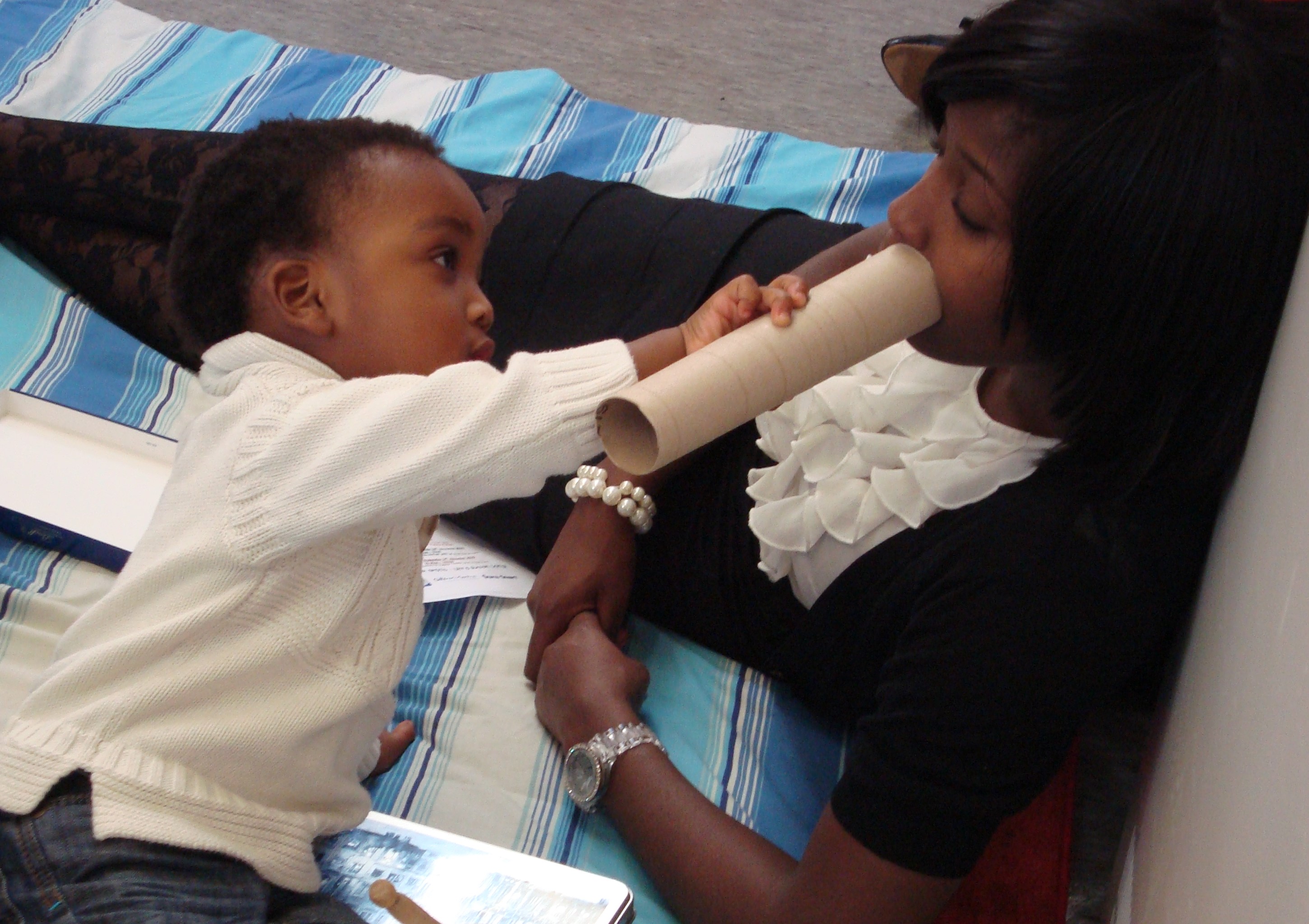 Kitchen rolls or toilet rolls: telescope or binoculars (stick two together), car park for miniature cars, megaphone (sorry parents!), tunnel, bandage for teddy’s sore arm.
Kitchen rolls or toilet rolls: telescope or binoculars (stick two together), car park for miniature cars, megaphone (sorry parents!), tunnel, bandage for teddy’s sore arm.
Egg carton: treasure chest, seedling planter, colour sorter, paint tray, building blocks.
Leaves: leaf rubbings, sensory play (crunching), colour sorting, small world hide and seek, paint stencil, outdoor pictures and nature art.
Laundry basket or big box: goal for paired up socks, vehicle (racing car, speed boat, carriage), ball pit, reading nook (add favourite books and blankets for extra cosiness).
nursery rhyme props:
Grand Old Duke of York: bang on a pan or empty box with a spoon (or hands) for the marching beat
Row, Row, Row Your Boat: sit opposite your child and use a scarf or a towel to pull each other back and forth
Zoom, Zoom Zoom, We're Going to the Moon: a colander on the head makes for a great intergalactic helmet!
London Bridge is Falling Down: build with cushions, egg boxes or empty margarine tubs…and enjoy knocking them down!
Whilst exploring these objects, your child will also be developing their early science and maths thinking and skills, even before they have the words to describe what they’re doing. It’s fascinating! It’s always worth keeping in mind, this year more than ever, that children don’t care how much toys cost, it’s your love and attention that mean the most to them.
Feature box colour:
Side Quote Color:
peep in stay and play sessions (drop-in)
> Click here for downloadable version of the Stay and Play ideas on this page
(We use the term ‘Stay and Play’ to include any Drop-in or Parent and Toddler type sessions, where families arrive and leave when they want, and move around to different play activities when they feel like it.)
Why include Peep: Using Peep Learning Together is an effective and practical way of adding opportunities to share ideas with parents about supporting their child’s development and their home learning environment, within the informal Stay and Play structure.
Getting started: We’ve suggested six ways of incorporating Peep, followed by 15 suggested topics (3 from each strand) that work well in Stay and Plays, using the Talk time: Activity session plans.
6 tips for incorporating a Peep topic into your Stay and Play sessions:
1. Display the Topic Card near the entrance, to introduce the session focus
These are the cards with an introductory sentence, starting ‘Thinking about…’.
This is a low-key way of introducing the session focus to families, as they arrive. You could also display it on the wall near the topic activity, and point it out during the session when appropriate.
2. Display a relevant Peep Tip next to your topic-related activity
These short tips are designed to share a message with parents about how the activity supports their child’s learning (stick the Peep Tip to the table to stop it getting knocked off). Often, they open the door to conversations with the parent.
You could use the activity suggested in the session plan with Talk time: Activity or feel free to adapt it or choose your own, to suit your and the families’ interests. You only need to have one topic-related activity (which you might spend more time near, to chat about the children’s learning in relation to it). Plan the other activities to suit your resources and families’ preferences, and/or the activities you usually have in Stay and Play sessions.
3. One-to-one conversations with parents
This can be done while you are at the topic activity, or when you get the chance. Chat with parents about one or two of the Key Ideas relating to the topic – read the Key Ideas and ‘Talk time’ suggestions before the session. You probably won’t get the opportunity to chat with every parent, it’s a drip, drip approach.
Parents quite often see drop-in sessions as an opportunity to chat with other parents while their child plays – which is an important aspect! But it’s also worth encouraging parents to come and join in with an activity their child is doing sometimes. It provides a way in for you to chat about the child’s learning, but also gives the parent an opportunity to have fun playing with their child – some parents don’t really see the point or are less confident about doing it than others.
4. Use cued modelling when playing, listening and talking with the children
This can be done at any time, engaging the child to support their learning. ‘Cued’ modelling is when you (as a practitioner) draw parents’ attention to something that you are doing – and why you are doing it, so that the parent/carer feels encouraged that it is something that THEY can do at home. It’s a step beyond simply modelling, which can (unintentionally) encourage parents to see the practitioner as the ‘expert’.
5. Share an LTP Key Idea or two during song time and story time
It’s great to add a song and story time at the end of your Stay and Play session, if you don’t already have one. About 20 minutes before the end of the session you could let the families know it’s tidy up time. After a few weeks of doing this, it will be part of the routine that the parents and children help you tidy up as part of the session, then you can all gather together for singing and story.
Including LTP Strand or Topic Key Ideas: Start the singing with the hello song and your familiar core of songs you share each week. Include one or two songs that relate to your topic, and share a few words about how it supports children’s learning (e.g. “Heads, shoulders, knees and toes is great for helping children learn the names of body parts" or "... for gradually learning to stay quiet for some bits as you go through the verses, which helps them develop their attention, and manage their actions and behaviour”). Finish the session with a story (and a key idea) and a goodbye song.
6. Share handouts with families
Remind parents at the end about the handouts for continuing Peep at home. This would usually be a TDAH (Things to Do At Home) - briefly share some of the ideas, and why you’re asking them to do these at home. If they’d like more info, you could also share the topic handout.
You could pin one to the wall and invite parents to take a photo of it, to save printing costs. Or you can share it electronically if you have a closed Facebook or WhatsApp group etc – and invite families to share comments or photos of their experience, to support and encourage each other.
Changing an existing Stay and Play: If you are going to make changes to an existing Stay and Play, be mindful that some parents may not like things to change - this is normal. It may be a good idea to share with existing families that you are starting to add Peep to your Stay and Plays, from whatever date you’re choosing, and explain why. There are leaflets on the website which you can share with existing or new parents. They explain what Peep is and how it supports young children’s learning in day-to-day life.
Gathering feedback:
this can be harder to gather in drop-in sessions so a joint feedback poster on the wall or shorter forms can help, eg:
> Peep Stay and Play feedback scale ('Becoming a good listener' example) - This can be particularly useful to print A3 and pin to the wall or leave near the door during a drop-in session, for families to add a sticker and comment before they leave. The topic name can be changed each session. You could also use it in a group session.
> Peep Feedback Slip - (general AND 'Sharing books with your baby' examples) - this slip contains two examples for asking parents ONE question at the end of a session, while it's fresh in their mind. It could either be a general 'What message/ideas are you taking away from today's session?' or one that relates to the session's focus e.g. 'How has Peep helped you share books with your baby?' You could either ask parents to jot down their thoughts, or you could ask if you can write down their verbal comment. You may or may not want to include session details on the slip.
> Peep feedback form - 3 topics (C&L examples) - as above, but with 3 topics. Adapt questions to relate to your topics and/or main course aims.
If you've found a particular feedback format or question/s to be useful, or you have any questions, please contact us: support@peeple.org.uk
Suggestions for Stay and Play (activity) topics
- The suggested topics can be used in any order (click blue bars below for details). They’re just suggestions – you can adapt them and/or choose other topics.
- Each topic name below is a weblink to the topic page (log in to the Peeple website for the link to open). We recommend reading the relevant topic, and picking a couple of key ideas to share.
- The Talk Time Activity is probably the easiest to use in this context – use the activity as your ‘topic‑related activity’, and display the suggested Peep Tip on the table next to it.
- We've suggested a Things to do at home (TDAH) handout and Peep tip for each topic. You can find them all in the Toolbox for that topic.
Feature box colour:

Side Quote Color:
Growing Minds Project
Growing Minds is an ambitious, collaborative project, bringing together experienced organisations and tried-and-tested interventions to improve school readiness and support young children’s life chances. It is led by a partnership of third sector organisations in Oxfordshire: Peeple, Home-Start Oxford and the Berin Centre. Growing Minds was made possible by Our Common Good and is supported by a consortium of donors.
Watch our Growing Minds video to find out more:
Oxfordshire Community Foundation created the Growing Minds project, launching it in Littlemore and Berinsfield, two income-deprived communities in Oxfordshire, in January 2020. The project was working with 277 families in these two areas by April 2022, when it handed over leadership to the three organisations mentioned above, who had been involved from the start. Growing Minds services for families are delivered by established local service providers from education, health and family support. It is now a well-known and valued service in both areas, with 433 children involved by April 2024.
Growing Mind’s birth to school pathway illustrates the joined-up approach to working with families with babies and children under five. It includes:
- 60 free book for each child to keep, delivered once a month from birth to age five, via the Dolly Parton Imagination Library - here's more about our local Growing Minds and Peeple Imagination Library. This has helped not only to engage new families, but to support their confidence and enjoyment in sharing books. All families surveyed reported doing this on a weekly or daily basis. Growing Minds families have received a total of 11,321 Imagination Library books (April 2024).
- Sharing initial information with families via people and services that they already have contact with, such as midwives, birth registrars, nursery nurses and health visitors.
- Developing responsive and flexible relationships with families, ensuring that their most urgent and basic needs are focused on first. The extraordinary pressures that families have faced during the pandemic led to an increased need for both financial and mental health support. HomeStart Oxford visit families at home and develop trusting relationships, offering practical support, as well as signposting them to specialist support services and/or other community groups.
- Peep Learning Together sessions – incorporated into groups, home visits and/or Stay and Play sessions, for parents and carers with their babies or young children. The Peep sessions share information and ideas with families that support their child’s learning in day-to-day life. 92% of the parents surveyed reported doing more things with their child that they learned about in the sessions, and 91% felt more confident supporting their child’s learning and development after attending groups. Another important aspect is the further strengthening of relationships – with practitioners in their local communities where sessions are held (such as the Family Centre/ Hub, church, pre-school and school, which can include transition/ school-ready sessions), and also with other families, providing on-going friendship and support for each other.
- Staying in touch between face-to-face sessions, via online newsletters, WhatsApp groups and a closed Growing Minds Facebook group for each area.
using the growing minds model in other areas
The model could also be rolled out in other areas of Oxfordshire and beyond. The flexible and collaborative approach has enabled the project to adapt to the various challenges of the pandemic and social distancing.
The key elements that would enable it to successfully be used elsewhere are:
- A preventative, early intervention approach – conversations starting at or before birth, and sharing tangible resources
- Evidence-based interventions – Imagination Library books, Peep Learning Together groups, one-to-one support for more intensive or tailored assistance when required
- A collaborative, local community, partnership approach – building on and extending existing relationships with and between services, professionals and families, from birth.
> Find out more: Evaluation summary of the Impact and Reach of the Growing Minds Project
growing minds
education, health and family support collaborative community project
Feature box colour:

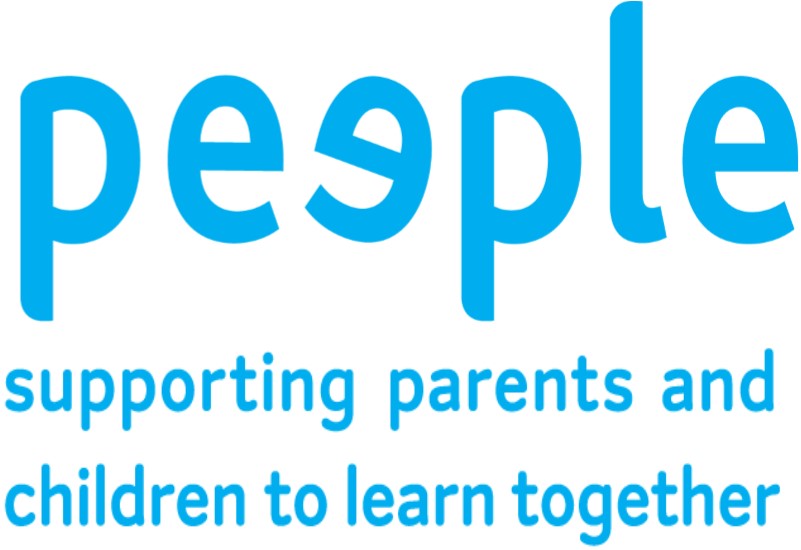



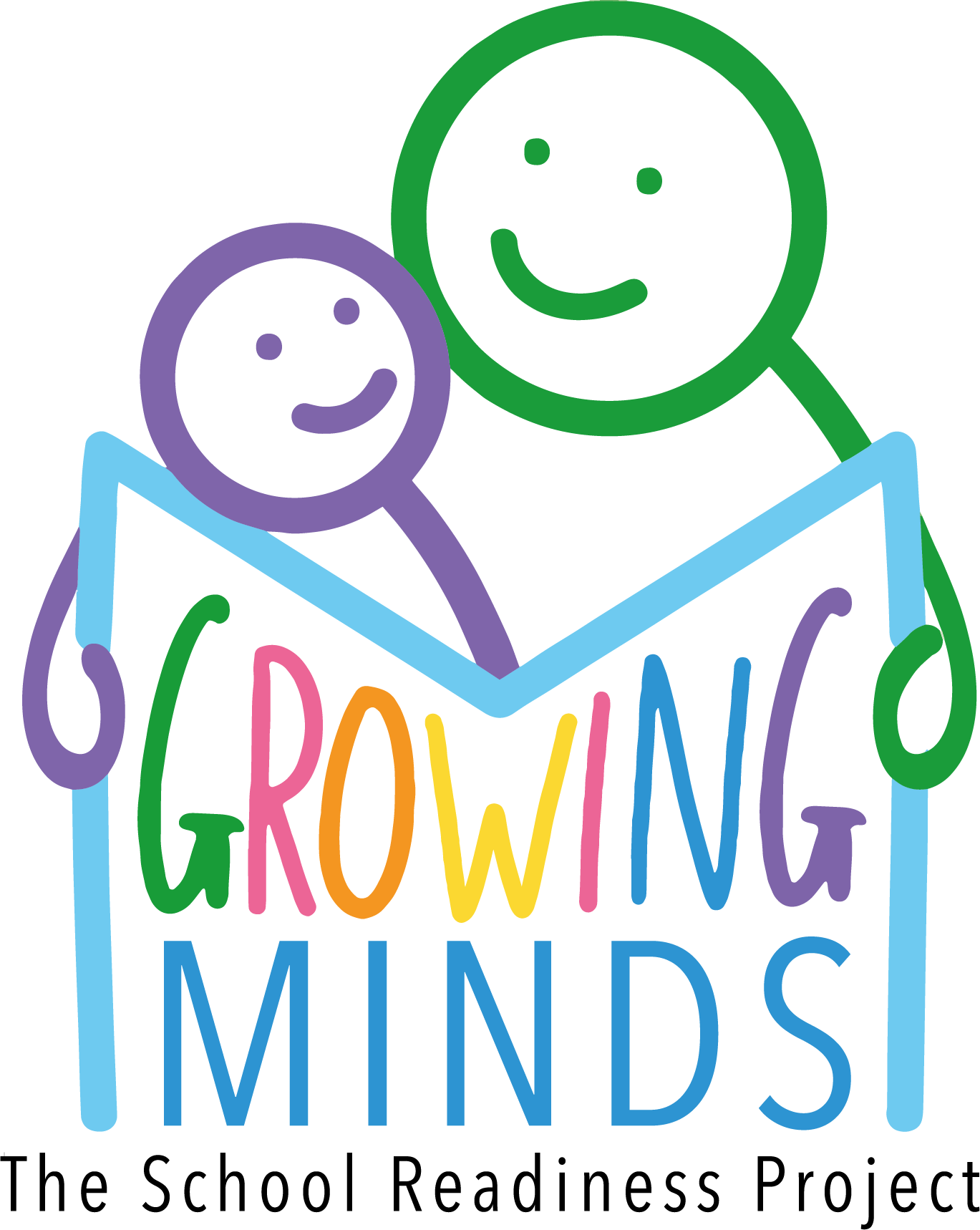
Side Quote Color:
START project: toddlers with a connection to autism or ADHD
The START programme was developed for toddlers with a connection to autism or ADHD. Research indicates that they may benefit from additional support to promote the development of strong thinking, attention and regulation skills that enable us to control our impulses, think flexibly to solve problems, and set and work towards goals. The programme was developed by Dr Alexandra Hendry (a developmental psychologist at the University of Oxford) in collaboration with Peeple.
The START team are now recruiting families with a child born between April - October 2022.
Find out more, and sign up to take part: www.startproject.info email: start@psy.ox.ac.uk or tel 07310 876421
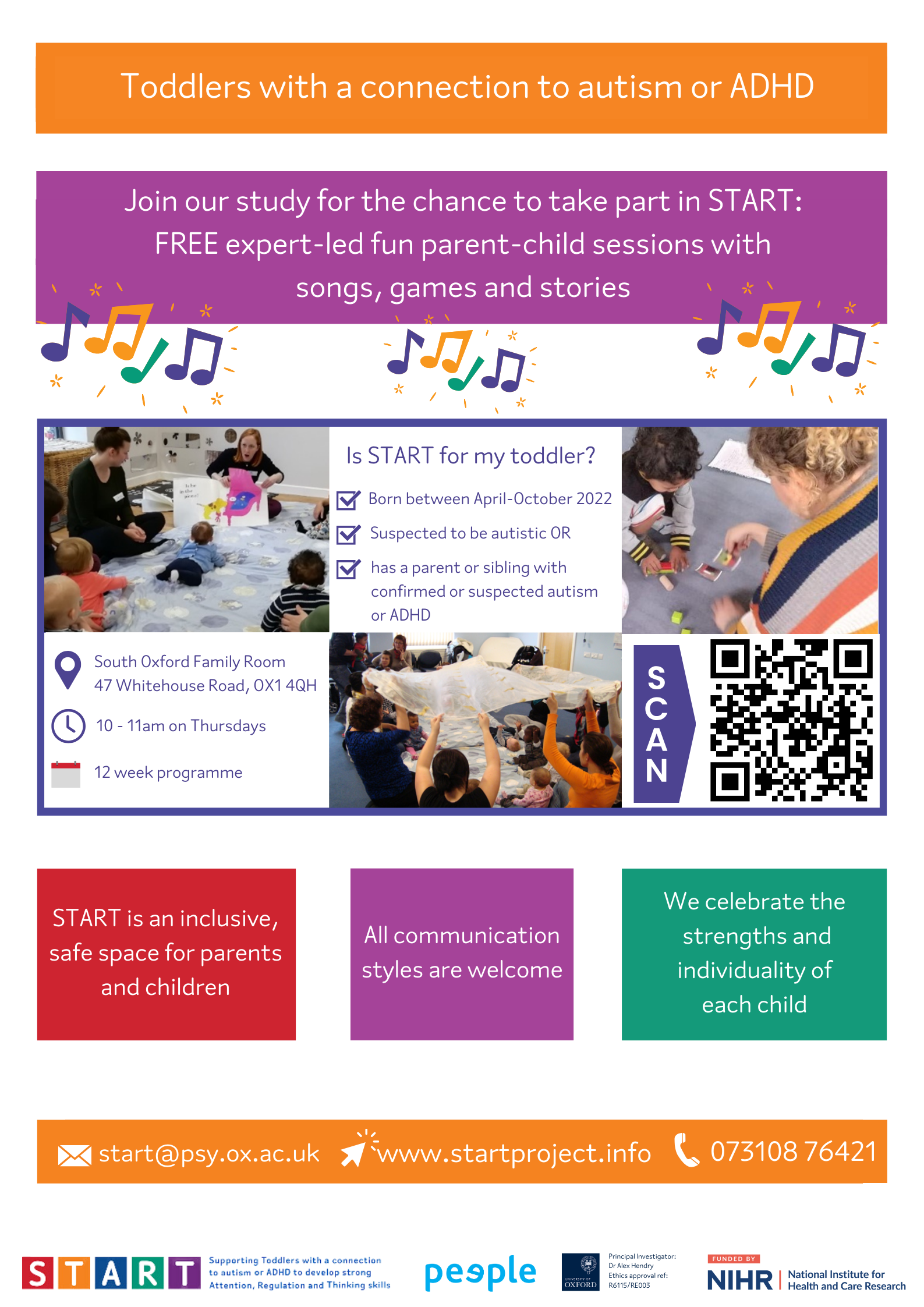
Feature box colour:
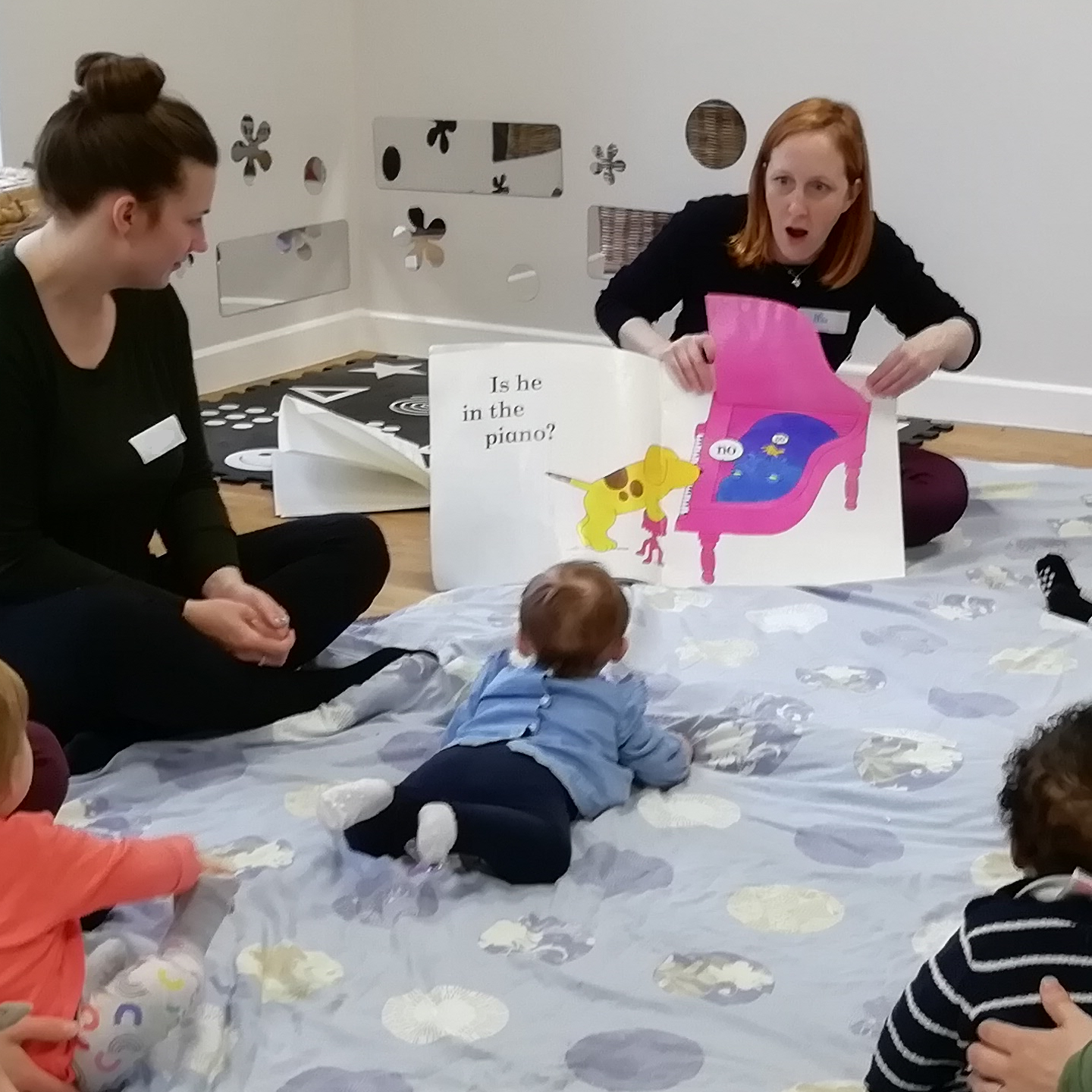
Side Quote Color:
6 ideas for playing outside
